Ch.1 – Cell Biology and Biochemistry – Flashcards
Unlock all answers in this set
Unlock answersquestion
life functions
answer
Certain activities that are performed by all living things. (everything that living things do: eating, breathing, growing, having babies)
question
coordination
answer
Different parts of the body work together to accomplish life functions.
question
nutrition
answer
Process that provides all the substances that are used by an organism for the growth, repair, and functioning of its tissues. (eating and using the food in the body)
question
tissue
answer
A group of cells in an organism that have similar structure and function.
question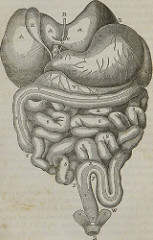
digestion

answer
processing food for use by the organism
question
circulation
answer
distribution of materials to all the cells of an organism
question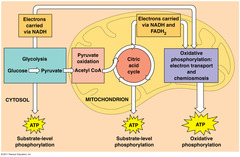
cellular respiration

answer
process that breaks down food to make ATP and release carbon dioxide as waste
question
glucose
answer
simple sugar that is used to make ATP through cellular respiration
question
ATP (adenosine triphosphate)
answer
molecule that stores the useable energy created during cellular respiration
question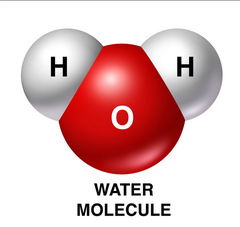
molecules

answer
Combinations of two or more atoms.
question
synthesis
answer
Combining of small molecules or substances into larger, more complex ones
question
excretion
answer
elimination of wastes from the body (urine, carbon dioxide, sweat)
question
carbon dioxide
answer
gas that is used in photosynthesis and a waste product of cellular respiration
question
reproduction
answer
Formation of new cells or a new individual
question
species
answer
two organisms that are so similar they can interbreed in nature and produce fertile offspring (two animals similar enough to have babies)
question
metabolism
answer
Chemical reactions in living organisms that are necessary to maintain life
question
homeostasis
answer
organisms maintain a relatively stable internal environment (they maintain a constant heat, amount of water, etc)
question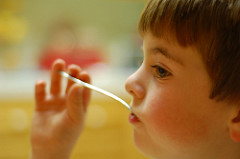
ingestion

answer
obtaining food from the environment
question
growth
answer
an increase in size
question
cells

answer
Basic structural and functional unit of organisms (all living things are made of cells)
question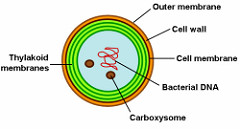
prokaryote

answer
Cell without a nucleus or membrane bound organelles. Ex. bacteria
question
eukaryote
answer
cell with a nucleus and membrane bound organelles
question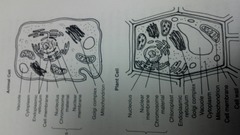
cell theory

answer
all living things are made of cells. All cells come from other cells
question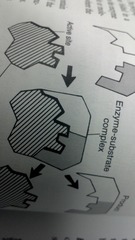
synthesize

answer
the making of compounds that are essential to life
question
organelles
answer
"little organs". structures within a cell that perform a specific job
question
cell membrane
answer
The skin of the cell that separates the inside from the outside. It is a selectively permeable membrane. It controls what can go in and what can go out.
question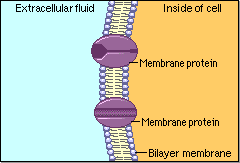
selective permeability

answer
the ability of a cell membrane to determine which molecules can go through it. Some things can go into the cell, some cannot.
question
diffusion
answer
movement from areas of greater concentration to lesser concentration.
question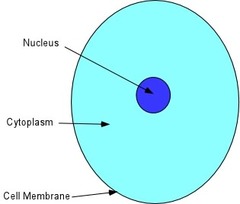
cytoplasm

answer
the fluid that fills the space between the cell membrane and the nucleus.
question
nucleus
answer
A membrane-bound organelle in a eukaryotic cell that stores the DNA
question
ribosomes
answer
organelles that produce proteins
question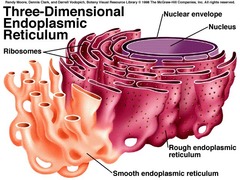
endoplasmic reticulum

answer
An organelle. It makes the cell membrane.
question
mitochondria
answer
organelle where aerobic cellular respiration makes ATP. Provides the cell with energy
question
vacuoles
answer
organelles that store things. They are like little bubbles that hold food and wastes
question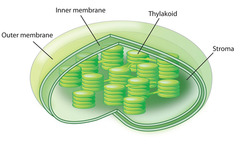
chloroplasts

answer
organelles in plants and algae that have chlorophyll in them and do photosynthesis
question
cell wall
answer
strong walls (located outside of cell membrane) that provides strength to cells.
question
Golgi apparatus
answer
organelle that is involved in releasing finished products into the cytoplasm or outside of the cell
question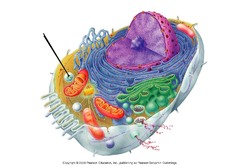
lysosomes

answer
break down large molecules into smaller molecules.
question
cytoskeleton
answer
like a little skeleton that helps maintain the cell's shape
question
cilia
answer
Little hairs that work like legs. They help the cell move
question
flagella
answer
a long hair that cell uses to move
question
element
answer
a substance that cannot chemically be broken down into simpler substances
question
carbon
answer
one of the six most important chemical elements for living things; carbon is used in almost all all organic compounds
question
hydrogen

answer
one of the six most important chemical elements for living things
question
oxygen
answer
one of the six most important chemical elements for living things; released as a result of photosynthesis; essential to cellular respiration
question
nitrogen
answer
one of the six most important chemical elements for living things
question
atoms
answer
smallest particles that have the characteristics of their particular element
question
compound
answer
formed when two or more elements combine chemically
question
inorganic compounds
answer
compounds that do not contain both carbon and hydrogen atoms
question
organic compounds
answer
compounds that contain both carbon and hydrogen atoms
question
carbohydrates

answer
a group of organic compounds (includes simple sugars and starch), made up of hydrogen, oxygen, and carbon. Used for energy and storage
question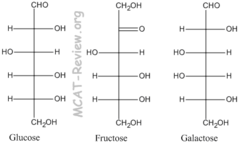
simple sugars

answer
the simplest carbohydrates. Example: glucose, galactose, and fructose
question
starch
answer
a complex carbohydrate used for energy storage in plants
question
proteins
answer
organic compounds that are made up of chains of amino acids. Proteins are used to make basically everything inside the body
question
amino acids
answer
compounds found in living cells that contain carbon, oxygen, hydrogen, and nitrogen, and join together to form proteins.
question
monosaccharides
answer
simple sugars
question
disaccharides
answer
two monosaccharides stuck together
question
polysaccharides
answer
complex carbohydrates made up of many (more than two) monosaccharide molecules
question
lipids
answer
organic compounds that store energy for long-term use. Ex. fats, oils, and waxes
question
nucleic acids
answer
organic compounds that include DNA and RNA
question
DNA (deoxyribonucleic acid)
answer
contains all of the organism's genetic information
question
replication
answer
making exact copies of complex molecules, such as DNA. It occurs during the growth phase of living organisms
question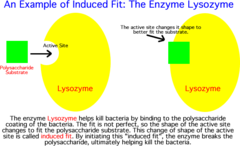
enzymes

answer
proteins that speed up chemical reactions in living things
question
catalysts
answer
substances that speed up chemical reaction, but are not changed during the reaction
question
pH

answer
how acidic something is
question
plasma membrane
answer
separates the inside and outside of a cell
question
Organisms
answer
all living things



